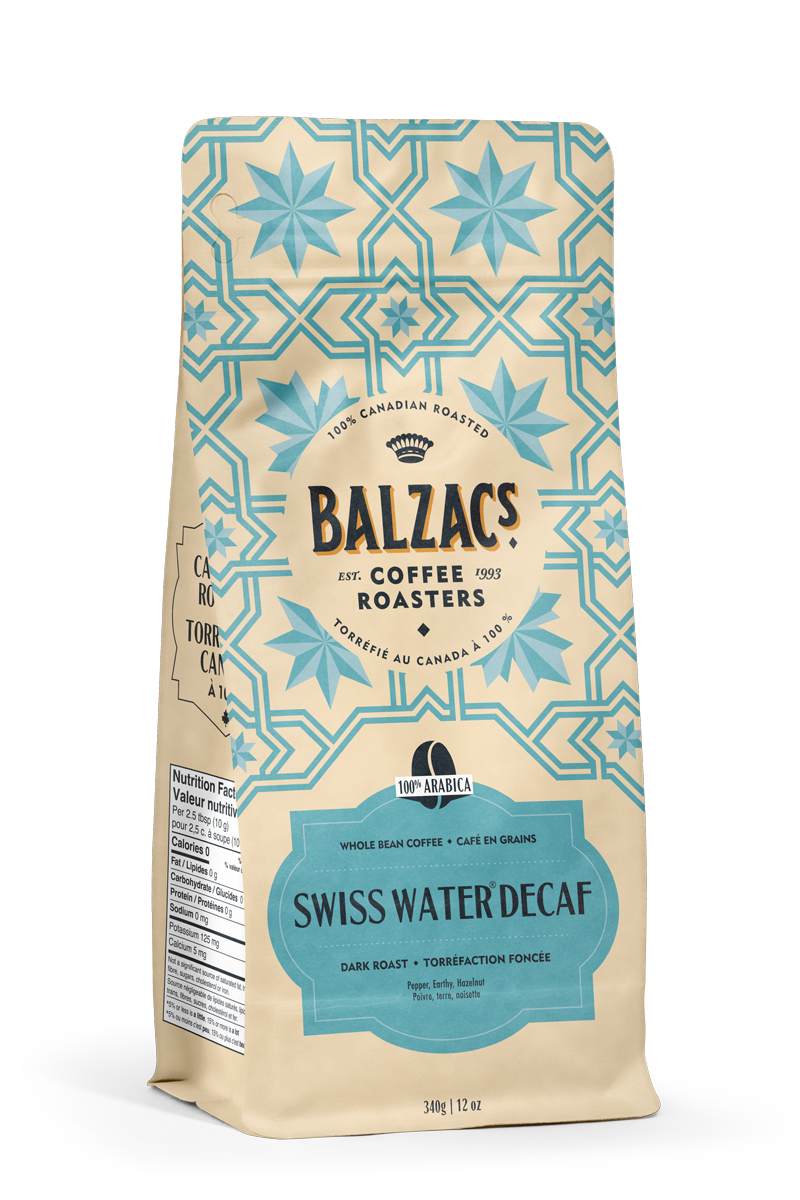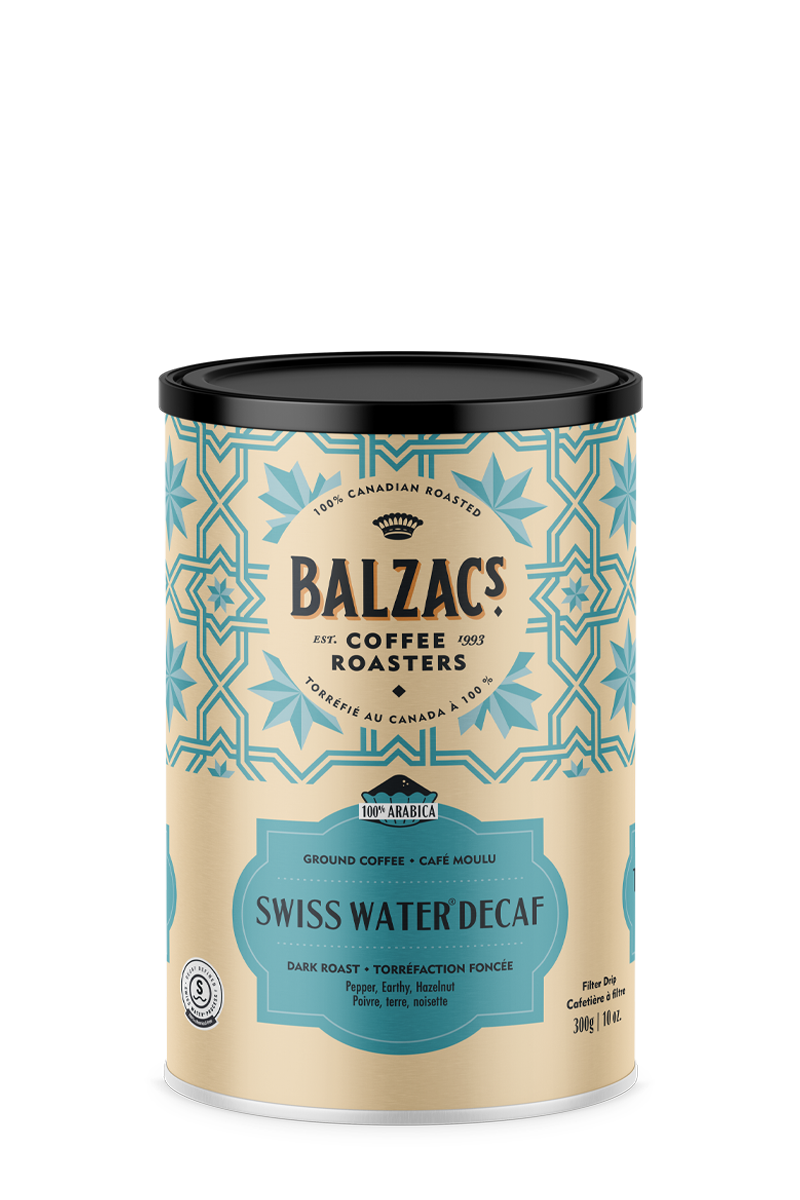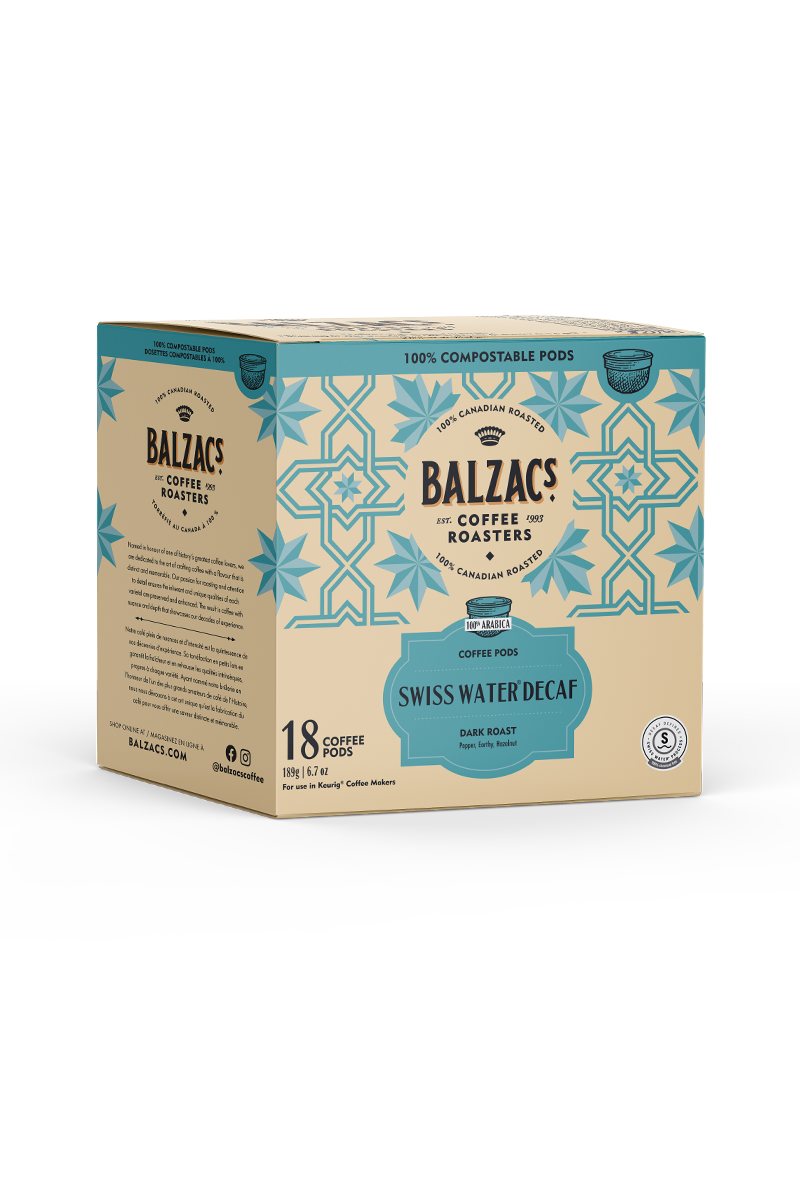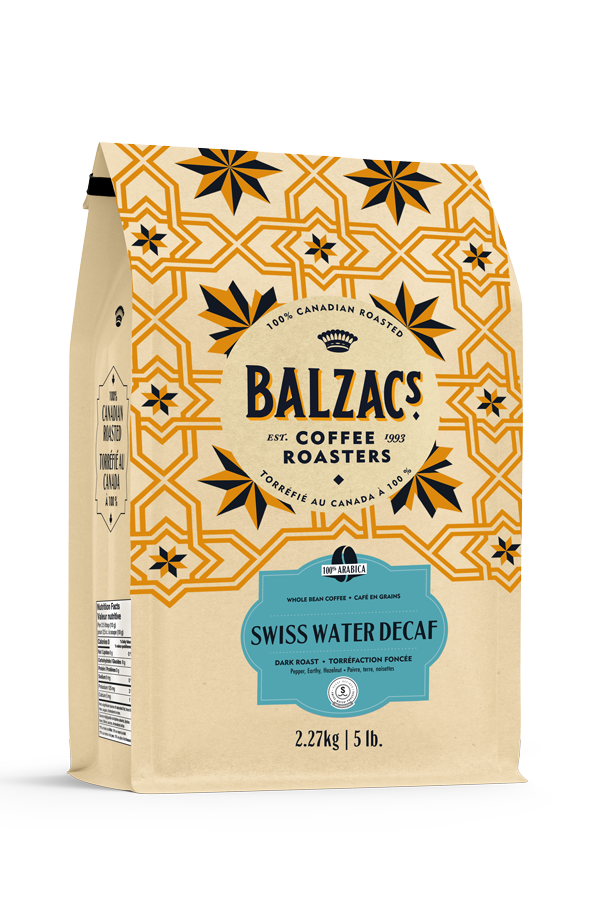Swiss Water Decaf
Dark Roast
- Regular price
- $15.00
- Sale price
- $15.00
- Regular price
-
Couldn't load pickup availability
Made with Colombian coffee and processed in the 100% chemical-free Swiss water decaffeination method. It won’t keep you up at night or let you down on flavour.
Taste profile:
Hazelnut, Earthy, Pepper
Hazelnut, Earthy, Pepper
| Acidity |
2
|
Sweetness |
4
|
| Body |
4
|
More Details
The Swiss Water Decaffeination process uses no organic solvents; only water is used to decaffeinate beans, a technique first developed in Switzerland in 1933.The process uses green coffee extract (GCE) for the caffeine extraction mechanism. Green coffee extract is a solution containing the water-soluble components of green coffee except for the caffeine, obtained by soaking green coffee beans in hot water, then filtering through an activated charcoal filter to remove the caffeine molecules. Fresh beans containing both caffeine and the other components are added to the GCE solution, where the gradient pressure difference between the GCE (which is caffeine-deficient) and the green coffee (which is caffeine-rich) causes the caffeine molecules to migrate from the green coffee into the GCE. Because GCE is saturated with the other water-soluble components of green coffee, only the caffeine molecule migrates to the GCE; the other water-soluble coffee elements are retained in the green coffee. The newly caffeine-rich GCE solution is then passed through the activated carbon filters to remove the caffeine again, and the process is repeated. The continuous batch process takes 8–10 hours to meet the final residual decaffeinated target.






